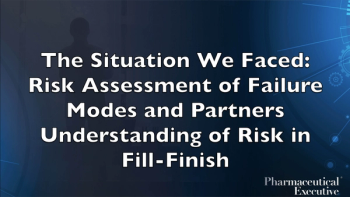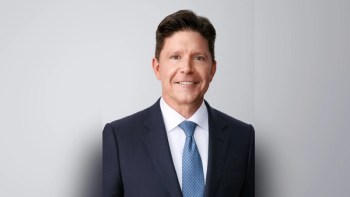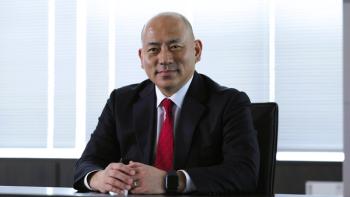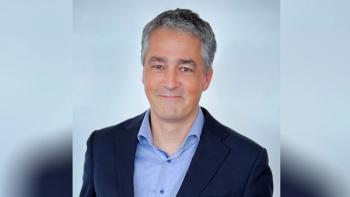
Currax Pharmaceuticals: Targeting Smoking and Obesity
Pharm Exec speaks to George Hampton, CEO of Currax, one of the only pharma companies addressing obesity and smoking.
George Hampton joined Currax Pharmaceuticals in April of 2019 as Chief Executive Officer and serves on its Board of Directors. He has 30 years of experience as a successful executive in the pharma and biotech industry on both a national and international scale, including specific expertise in rare disease (Actimmune, Ravicti, Procysbi), autoimmune (Humira), primary care, orthopedic (Celebrex), diabetes (Byetta, Insulin), anti-infectives and cardiovascular spaces.
Here, Hampton tells Pharm Exec about Currax’s fight against the number one and two preventable causes of death in the United States — smoking and obesity.
Pharm Exec: Tell us about Currax Pharmaceuticals, your mission and portfolio.
George Hampton: Currax Pharmaceuticals is a specialty biopharmaceutical company headquartered in Brentwood, TN, dedicated to expanding patient access to clinically differentiated prescription medicines globally. Our primary focus is on the number one and number two causes of preventable death in the U.S., smoking and obesity. Smoking and obesity cause enormous collateral damage in the body, resulting in an array of severe co-morbidities in patients. The financial burden to the US healthcare system is unrivaled, with hundreds of billions being spent each year. Currax is committed to helping more patients and transforming the treatment of these diseases. We have more than 20 products in our portfolio, including CONTRAVE®, the number one prescribed branded oral weight-loss medication in the US; ONZETRA® Xsail®, a prescription medication approved for the acute treatment of migraine, with or without aura in adults; Silenor®, a prescription medication approved for the treatment of insomnia characterized by difficulties with sleep maintenance; and, Treximet®, a prescription medication to treat acute migraine headaches with or without aura in patients 12 years of age and older.
You don’t often hear of a pharma company dedicated to fighting obesity and smoking. Can you elaborate on that?
We want to deliver real solutions to our nation’s biggest problems in healthcare. Obesity and smoking are at the top of the pyramid — responsible for many other diseases and illnesses — it gets no bigger than this in terms of impacted patients and cost.
According to the latest Harvard T.H. Chan School of Public Health study, obesity costs the U.S. around $173 billion annually in direct medical expenses and is mostly being treated as a “lifestyle” issue, rather than a serious medical disease that necessitates meaningful investment and, oftentimes, medical intervention. The extension of this stigma has led to a limited number of options in the space — with only four pharmaceutical products to choose from today, little-to-no commercial insurance coverage and essentially zero government coverage supporting patients.
Due to the assumptions about obesity — and knowing that there are similar assumptions about smoking — Currax is working to empower people to have meaningful conversations about their weight with providers. With more than 60% of our U.S. population deemed overweight or obese and only 2% of patients being treated with a prescription medicine, there is significant room for improvement to help patients. Currax’s goal is to change this dynamic with continued investment, ongoing promotion of our lead asset — CONTRAVE® — and expanded patient access to our medication through initiatives such as our CurAccess™ Program. This program ensures cash-paying patients can access CONTRAVE® for no more than $99.
You mention CONTRAVE®, but how is Currax addressing smoking?
As a society, we have not done a good enough job in advancing the smoking cessation effort. According to the World Health Organization, tobacco kills more than eight million people annually — 7 million from direct usage and 1.2 million from second-hand smoke. Despite these staggering numbers, there has not been a single new pharmaceutical product developed for smoking cessation in more than 15 years. To put that in perspective, the last new pharmaceutical product for smoking cessation was approved before the original iPhone came to market. It is amazing to think about the sheer volume of innovation the world has experienced and benefitted from since the inception of the iPhone, yet the pharmaceutical industry has done nothing to help smokers. During that same time, tobacco companies innovated at an unparalleled pace. A new generation of people are now addicted to nicotine thanks to literally thousands of new products — including vapes and e-cigarettes — for which there is an outlandishly long list of flavors. The rate of smoking in the U.S. is increasing and the CDC reports that smoking costs the U.S. healthcare system $225 billion annually in direct medical expenses. Despite the myriad of efforts to reduce smoking, cigarette sales rose in 2020 for the first time in nearly three decades with more than 203.7 billion cigarettes sold — an increase of more than 800 million since 2019. Currax’s goal is to help those people who want to quit and stay off combustible cigarettes.
We are working with the FDA to launch a Phase III trial to evaluate the safety and efficacy of CX-101 for smoking cessation. The Phase III program proposal to the FDA includes patient support through telephonic and mobile counseling, and evaluates a broader set of factors including, but not limited to, weight gain that often deters patients from trying to quit smoking. If successful, CX-101 will be the first new pharmaceutical product for smoking cessation in almost two decades.
Has Currax made any recent investments in the obesity and smoking categories?
We are doubling down on our fight against the nation’s smoking and obesity epidemics; attacking these core diseases has the potential to lessen the burden of other diseases while, at the same time, reducing significant direct costs in our healthcare system. To do this, we need best-in-class talent who are passionate about helping patients and committed to taking on the big goals we’ve set for our company.
Most recently, we announced the appointment of Dr. Michael Kyle as Chief Medical Officer. Dr. Kyle will oversee Currax’s clinical, regulatory, and medical affairs, as well as pharmacovigilance. Importantly, he will also lead our smoking cessation efforts through the CX-101 program. Dr. Kyle has a distinguished career in both the pharmaceutical industry and, previously, as a physician in private practice.
We also recently appointed Ed Cinca to the role of Senior Vice President, Global Marketing and Strategic Alliance Management. Ed has responsibility for and leads global commercial strategy for the entire Currax portfolio. Prior to joining Currax, Ed served as a Novo Nordisk, Inc. Leadership Team Member and Vice President, Head of Cardiometabolic Portfolio, where he led the launches of Ozempic, Rybelsus and Wegovy.
We are investing in top talent, innovative patient services programs expanding access and ensuring health equity, launching clinical trials, and accelerating our existing brands to make a difference in the lives of the patients we currently serve — as well as those we hope to help in the years ahead. The United States healthcare system stands out because of its innovation, yet obesity and smoking exist as two addressable epidemics that plague our country’s healthcare system and more than 100 million of our fellow citizens. It is Currax’s goal to continue to innovate and invest in these two disease states, drive expanded patient access to medications and, in-turn, improve the lives of the patients we proudly serve.
Newsletter
Lead with insight with the Pharmaceutical Executive newsletter, featuring strategic analysis, leadership trends, and market intelligence for biopharma decision-makers.





